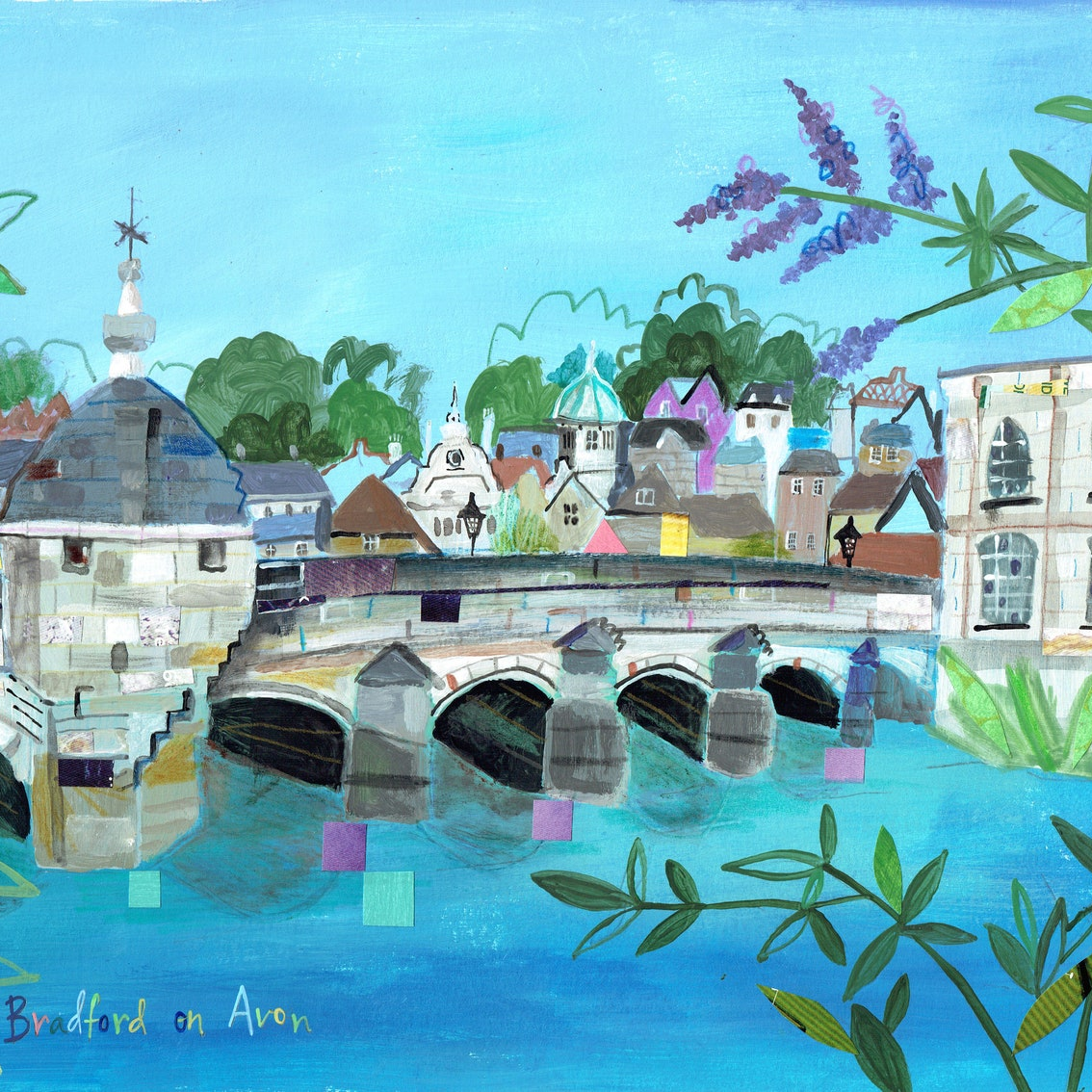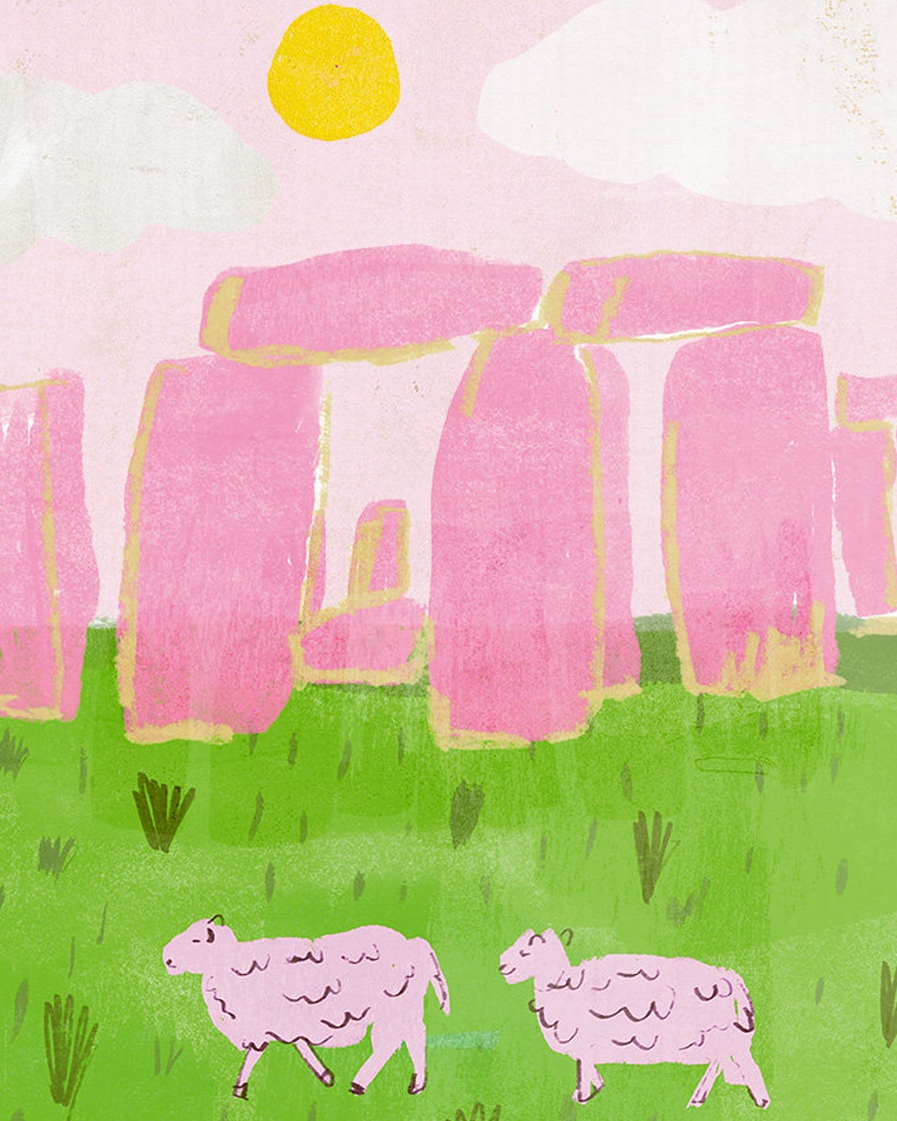Wiltshire: Chalk Horses, Salisbury Cathedral and Stonehenge

Wiltshire is a large county in south west England, home to England’s most beautiful building (Salisbury cathedral), mysterious Stonehenge and most of England’s chalk horses, carved out thousands of years ago on the Wessex Downs.
Always follow the Countryside Code, to keep all creatures safe.
Wiltshire’s White Horses: Chalk Hill Figures
Although some other places (like Sussex and Oxfordshire) have a few chalk figures carved into the grass, Wiltshire has most of them, and nearly always in the form of horses. Best seen from footpaths that cross the Wessex downs, these are now regularly maintained by volunteers, t1o stop1
It’s a mystery why they were carved. Although one apparently stopped a visiting King ever returning. He saw that the horse was ‘facing the other way’, and took it as a sign that he was not welcome!

Bradford-on-Avon (Liz and Kate Pope) is a historic town in Wiltshire, its named derived from its ‘broad ford’. With a strong link to the weaving industry, it still contains the remains of a large Roman villa, and an iconic arched stone bridge, built in the 13th century.
The small building on the bridge was a chapel, that also used to lock up prisoners, in the 17th century.
Just 12 minutes by train from the beautiful city of Bath, the town sits on the Bristol Avon River (a 75-mile river which begins in the hills near Acton Turville in southwest England. Before flowing to Bristol, and out to the sea at the Severn Estuary.
The Kennet and Avon Canal: Peaceful Waterside Walks
This canal winds across Wiltshire, offering miles of waterside paths, that are perfect for walkers. Boats slowly chug by, kingfishers dart across the river, and wildflowers line the banks in spring and summer.
Caen Hill Locks (near Devizes) showcases the engineering skills of those who built the canals, and provide great picnic spots. The canal paths also link villages and market towns, making it easy to enjoy a relaxing day out, without a car.
Read our post on how to protect England’s historic canals.
The Vale of Pewsey: Rolling Countryside
The Vale of Pewsey lies in the heart of Wiltshire, tucked between lush hills and dotted with small villages. This quiet area includes a Nature Reserve, known for its rare plants, butterflies and chalk grassland views.
The vale is home to several white horses and lovely riverside walks. Local pubs and tearooms serve up hearty food after a day outside.
Lacock: A Timeless Wiltshire Village
This village has timbered cottages, medieval streets and a famous abbey. The local abbey’s cloisters and gardens, invite you to wander in peace. This place offers a real taste of ‘old England, with cosy pubs and small shops. All wrapped in Wiltshire’s green countryside.
Marlborough Downs: Sweeping Views and Walks
The Marlborough Downs cover a stretch of rolling chalk hills, dotted with sheep and ancient burial barrows. This is a walker’s paradise, with footpaths crossing the fields, woods and open hillsides.
The Ridgeway (England’s oldest road) passes through here. Enjoy far-reaching views, gentle hills and little bursts of wildlife – hares, skylarks and sometimes even rare orchids.
England’s Most Beautiful Building?

American writer Bill Bryson once wrote that he believed Salisbury Cathedral to be England’s most beautiful building (he also is an avid campaigner against litter, saying he cannot believe that people drop sweet wrappers and crisp packets on our green and pleasant land).
The cathedral took 38 years to build, and is a striking example of English Gothic style, with the world’s oldest working mechanical clock, stunning stained glass and peaceful cloisters. The Chapter House displays one of the four surviving copies of the Magna Carta.
Outside, the lush close is ringed with trees and lawn, and as popular as the cathedral itself.
The Mysterious History of Stonehenge

Standing on Salisbury Plain, Stonehenge is an ancient circle of stones, likely built over 4000 years ago. Nobody is quite sure why the stones are there, nor how they got there (possibly by water, back in the day).
It is said that the stones could be burial stones, or even that they were some kind of astronomy formation. Bath’s Royal Crescent is said to be influenced by the design.
There are two main types of stones at Stonehenge: sarsen stones and bluestones. The large sarsen stones weigh up to 25 tonnes and were probably dragged from Marlborough Downs, about 20 miles away.
The smaller bluestones came from the Preseli Hills in south-west Wales, more than 150 miles away. Moving these stones across rivers, hills, and fields without modern machines shows the builders’ planning and skill.
Although often celebrated at Summer Solstice, some of the ‘hippies’ that visit are not so earth-friendly. Many have been banned by the local council, for leaving too much litter.
Nearby, Avebury Stone Circle is not as well known, but this stone circle is just as remarkable. Dating back to around 2600BC, it sits around the village of the same name. And while Stonehenge is fenced, here you can walk up to the stones, and touch them to say hello!
Avebury is less famous than Stonehenge but just as remarkable. This huge stone circle, set around the village of Avebury, dates back to around 2600 BC. While Stonehenge is fenced, at Avebury you can walk right up to the stones and even touch them.





